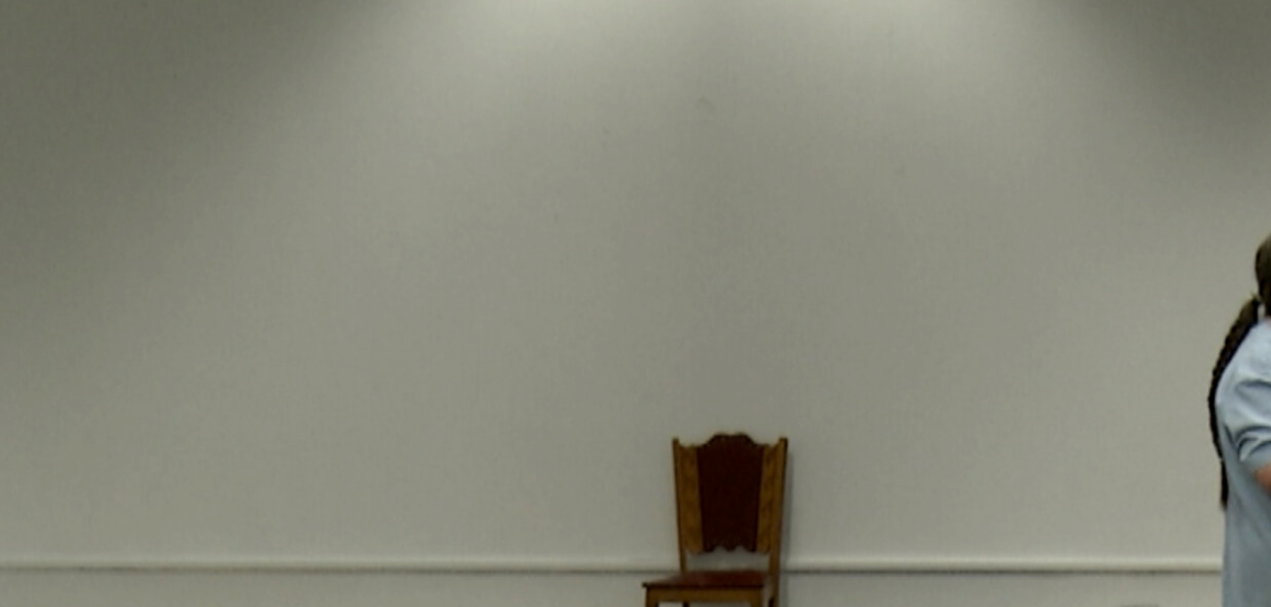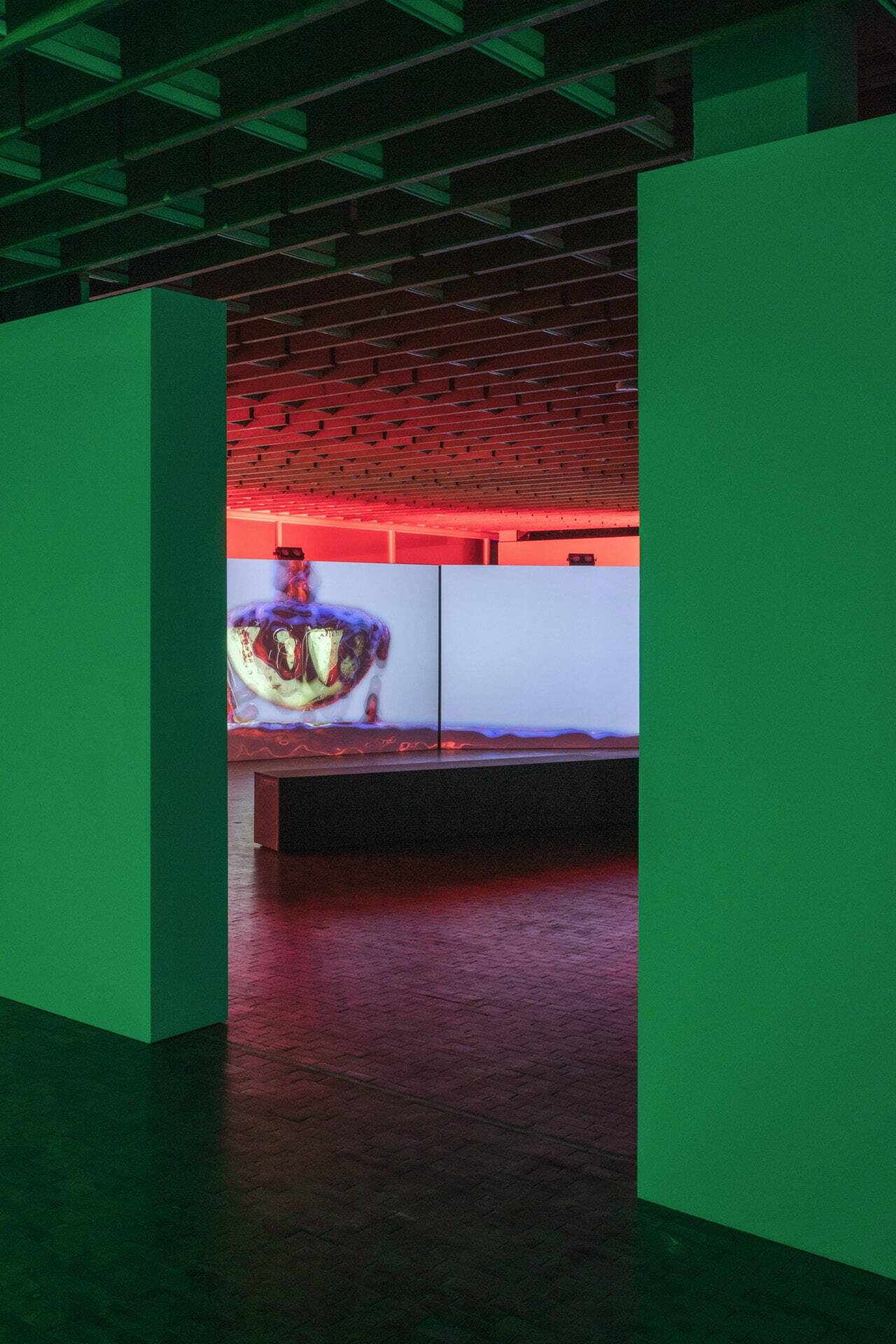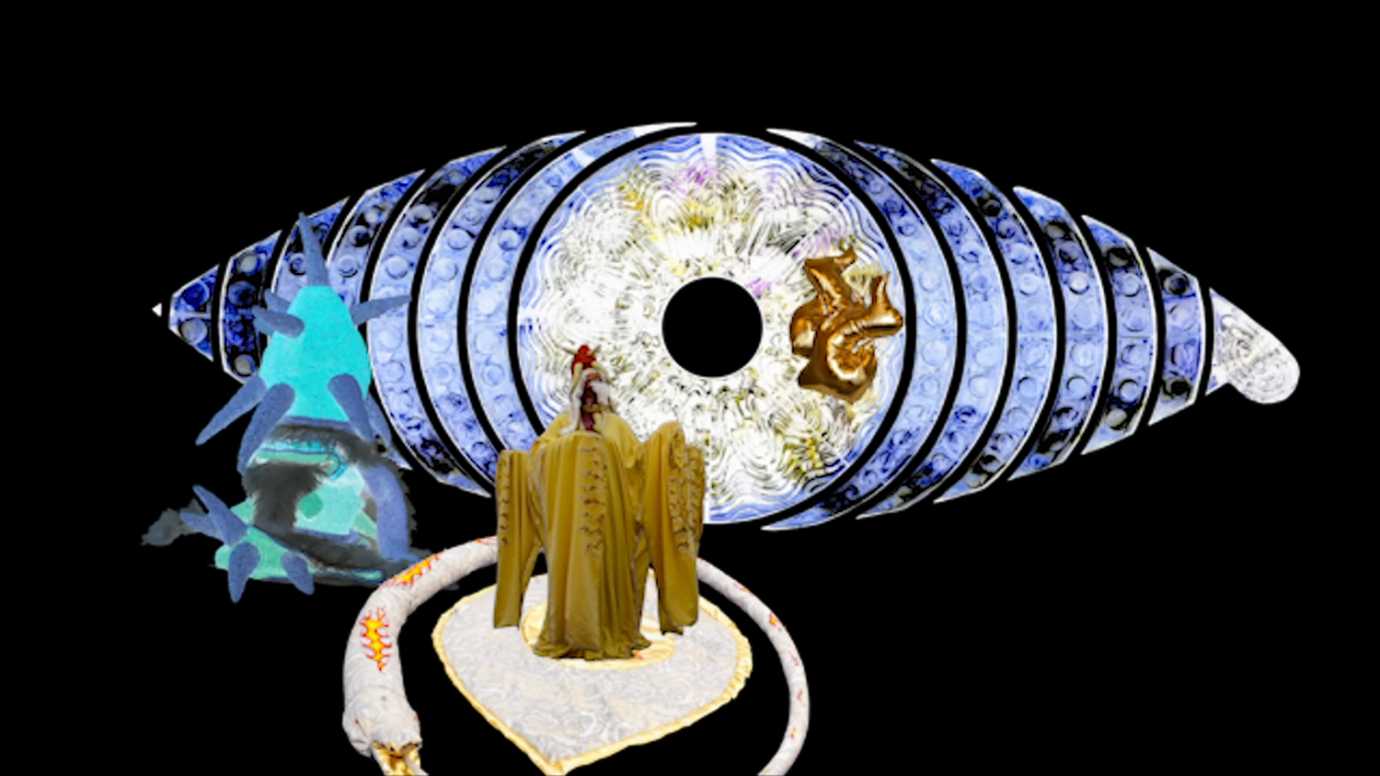One pitfall of feminist narratives can be to separate the female condition from ecology, economy or nationalism; to detach it from what constitutes and sustains it. Another misleading tendency is to place the limelight on women’s prominent achievements, forgetting the daily struggles many face in order to maintain their environment. These are the main issues The Ordinary Lives of Women exhibition challenges.The ten female artists within this exhibition approach the multi-faceted lives of those identified and identifying as women around the world. They address the mundane in the revolutionary and reveal the revolutionary within the mundane. Going beyond iconic and visible moments of feminist acts, they explore how other, less conspicuous acts, such as radical care, can disrupt and sabotage established power, reflected in Antigone’s ultimately fatal refusal to leave her brother’s corpse unburied. Here, the artists do not necessarily defend any feminine or female essence, but rather attempt to reclaim a space for female politics and restate how power shapes every aspect of women’s lives. What may be common to all the works in the exhibition are the quandaries in which women find themselves daily. Women are possessors of bodies which at the same time are publicly owned. Patriarchy offers little recognition of the daily gestures that women implement in order to keep unofficial history alive, to defend the rights of the undervalued, to work and care simultaneously; in other words, the wide variety of women’s modes of resistance.Placing the limelight on the achievements of individual women leaves little space in which to acknowledge the lives of women on an equal footing, and with equal rights and respect. The Ordinary Lives of Women, instead, gives visibility to the mundane, to its constraints and its revolutionary potential. There can be revolution in the mundane, just as there can by mundanity in the revolutionary process.
Co-curators: Elise Billiard Pisani, Margerita Pulè
Exhibition design: Noura AbdelhafidhFilm
programme: Nicole Bearman
Catalogue: Ann Dingli
abandon all hope ye who enter here
transmediale creates a space for critical reflection on cultural transformation from a post-digital perspective. For over thirty years, the annual festival for art and digital culture has been bringing together international artists, researchers, activists, and thinkers with the goal of developing new outlooks on our technological era through the entanglement of different genres and curatorial approaches. In the course of its history, transmediale has grown from its beginnings as VideoFilmFest to one of the most important events for art and digital culture worldwide.Beyond the yearly event, transmediale is a transversal, dynamic platform with a vibrant community and a strong network that facilitates regular publications and year-round activities including commissions and artist residencies. One of transmediale’s closest cooperation partners is CTM Festival. The German Federal Cultural Foundation (kulturstiftung des Bundes) has supported transmediale as a cultural institution of excellence since 2004.
Such stuff as worlds are made on
Reflecting on human time-scales, alongside the deep time of the universe, this project explores possible inclusive futures via world-building and speculative art practices, while consciously avoiding the replication of colonial models. Ultimately, the project questions what kinds of new worlds can be created and what kind of rules these worlds will have to follow.
Informed by Donna Haraway’s Speculative Fabulations this exhibition looks towards cosmologies and ecosystems for inspirations, answers, and prophecies. Exploring practices that are speculative rather than empirically scientific, it reflects on the limits of human knowledge of our own planet, alongside humankind’s increasing desire to extend itself to neighbouring planets and planetary systems.In very recent years on the human time-scale, we have witnessed multiple moon landings, frequent image flow from Mars and the neo-colonial ambitions of a small number of billionaires. This project shifts the perspective towards non-privileged humans, nonhumans, biomes and Martian life forms in order to reflect on space colonisation and planetary time.Looking back through millennia, the project imagines the births and deaths of planets, the creation of the cosmos, the universe, and our home the earth. Looking forward, the project speculates on how other worlds are being explored or created, and questions if space really is humankind’s final frontier.New and existing works – and the interaction between them – seek a deeper understanding of the origins of humankind in cosmological, geological and evolutionary terms that can serve to develop long-term evolutionary perspectives. Is humankind struggling in its capacity to face up to the existential crises it is facing? What can we learn from other life forms that have lived through similar extinction-threatening events? And will future generations be born into?
The exhibition is curated by Antje Liemann, Margerita Pulè (Unfinished Art Space) and Letta Shtohryn (Whatdowedonow?)
Website design
: Letta Shtohryn
Technical support: Andrew Pace
Catalogue design: Christian Lorenz
Communications : Manuela Zammit
This project is supported by Arts Council Malta
Remote Chaos Experience
The Rise and Fall of “Social Bot” Research
Painting Tech Dystopia: How the West tells itself fairytales about Asia – and believes they are real
Van Gogh TV – Piazza virtuale Hallo hallo ist da jemand?
Union Busting What is it and why you should care
Day to Night Timelapse Photography: “The Holy Grail”
When Wikileaks bumped into the CIA: Operation Kudo exposed
How to add Critical Thinking to your Making
“Information. What are they looking at?” A documentary on privacy for the broad audience.
Julian Assange and WikiLeaks: anatomy of a persecution
Stop general data retention in the EU – current plans for mass surveillance
Chinas Sozialkreditsystem: Das gefährlichste Bonitätssystem der Welt
Warum personalisierte Werbung verboten werden muss
Video Vortex Hybrid Event: Play, Pause and Reset
To compensate for the real life events that we are all missing so much, the VideoVortex community gathers during a hybrid event that happens both online and in the courtyard of John Cabot University in Rome. Organized and hosted by Donatella Della Ratta and Albert Figurt (in Rome) and Andreas Treske and Geert Lovink (online), we will switch between a conversation robot, Zoom, a drone and the obligatory online video screening in an experimental setup that will try to beat the overall online fatigue. Remember Malta, let’s bring on new VideoVortex gatherings! In the meanwhile, let’s preserve the spirit, see you all thereWhat is online video today, fifteen years into its exponential growth? What started with amateur work of YouTube prosumers has spread to virtually all communication apps: an explosion in the culture of mobile sound and vision. Now, in the age of the smart phone, video accompanies, informs, moves, and distracts us. Are you addicted yet? Look into that tiny camera, talk, move the phone, show us around — prove to others that you exist! Founded in 2007 by the Amsterdam Institute of Network Cultures, Video Vortex is a lively network of artists, activists, coders, curators, critics, and researchers that deals with all the facets of both politics and aesthetics of online video.
Flagged for Political Speech
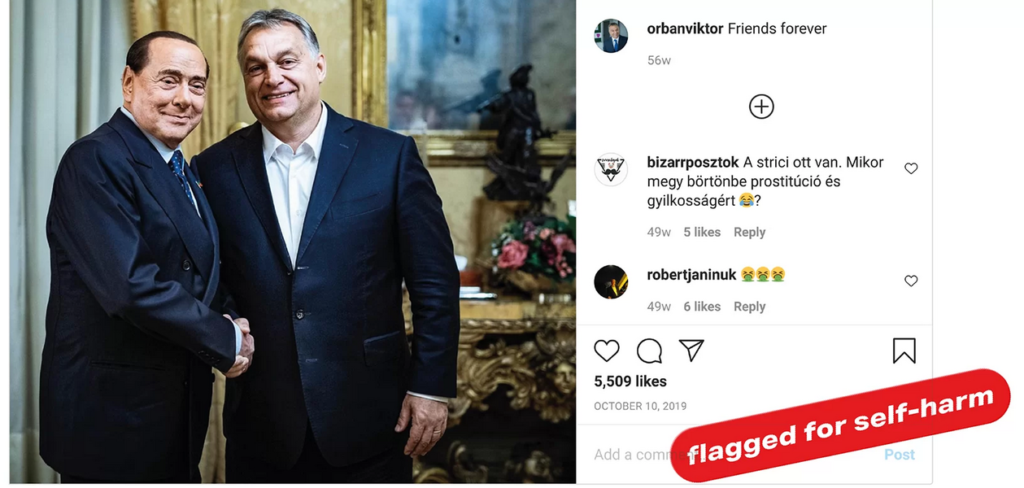
What do algorithms see when they look at your social media profile? Are you a good provider of content? And what exactly is good? What does the algorithmic view on your social media profiles say about you?
Analyses of social media profiles are employed in an increasing number of real-world transactions. From border control to job applications, social media profiles are used to assess the threat-levels of a candidate and verify their suitability to enter a country or organisaton.
Many of these social media checks are done automatically by algorithmic entities. How and what do these algorithms assess exactly? And what do their assessments look like?
To find out, !Mediengruppe Bitnik used Ferretly, an automated online service used by Human Resources Professionals to evaluate candidates’ social media profiles. Ferretly uses algorithms trained on keywords and image recognition to sift through 7 years of social media history. The service evaluates candidates publically available social media posts on Twitter, Instagram and Facebook, analyzing original posts, reposts, replies, and likes. Additionally, Ferretly will assess any news items they can find.
With their service, Ferretly promises to reduce the risk of letting a person displaying toxic behaviour into your organisation or country. Toxic behaviour is defined in 11 risk categories, from hate speech, political extremism, drug-related content to explicit images and toxic language. The publicly available posts are also used to look at the sub-text of each post: the candidate’s attitude towards the event or situation they are posting about is rated as positive, negative or neutral. Each candidate is judged according to these per-defined flags and sentiment points and given a social media score which rates them as fit or unfit for entry.
!Mediengruppe Bitnik ran the social media profiles of the leaders of each of the 27 EU member states through the service. Bitnik then interpreted the results of the analysis and used this as the basis to devise a customized sweatshirt for each of the 27 profiles.
Each shirt shows Bitnik’s interpretation and visualization of the Ferretly ratings. Besides their social media scores for different parameters, each of the shirts publicly displays a number of flagged posts which were rated by Ferretly as toxic and the reason for this rating. Depending on the report, the shirts contain more or less data. Usually more posts and data meant a worse social media rating by Ferretly.
Like the clothes we wear, our social media profiles have become the carrier of our identities. These online identities are used more and more by the gatekeepers of institutions, countries and organisations to verify that we are worthy of access.
Remote Chaos Experience (rC3)
Hyperemployment – Post-work, Online Labour and Automation
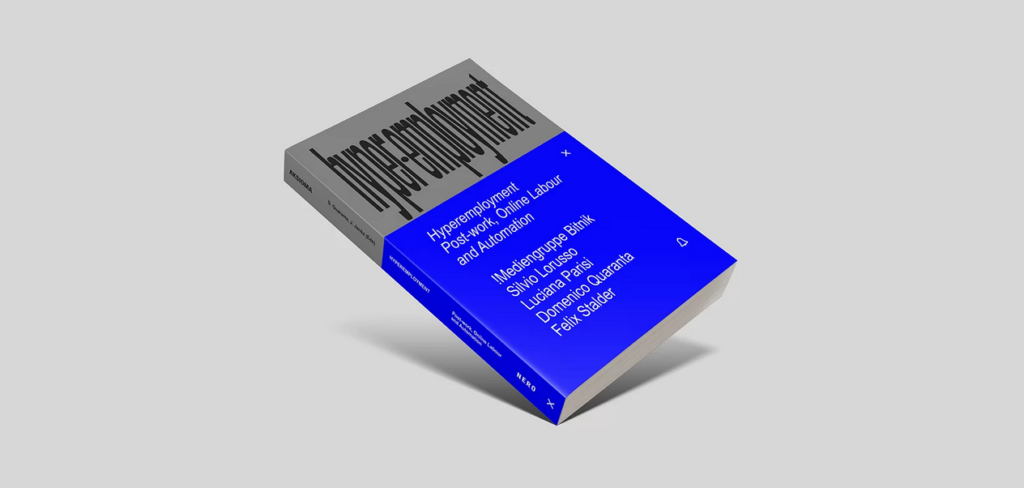
24/7. Algorithmic sovereignty. Anxiety. Artificial intelligence. Automation. Crowdfunding. Data extraction. Entreprecariat. Exploitation. Free labour. Free time. Gig working. Human-in-the-loop. Logistics. Machine vision. Man-machine complexity. Micro-labour. No future. Outsourcing. Peripheral work. Platform economy. Post-capitalism. Post-work. Procrastination. Quantification. Self-improvement. Social media fatigue. Time management. Unemployment. These are arguably just a few of the many keywords required to navigate our fragile, troubled, scattered present, in which the borders between life and work, home and office, sleep and wake, private and public, human and machine have faded, and in which the personal is not just political but economic. Edited by Domenico Quaranta and Janez Janša, featuring words by !Mediengruppe Bitnik (Carmen Weisskopf and Domagoj Smoljo) and Felix Stalder, Silvio Lorusso, Luciana Parisi, and Domenico Quaranta and works by !Mediengruppe Bitnik, Danilo Correale, Elisa Giardina Papa, Sanela Jahić, Silvio Lorusso, Jonas Lund, Michael Mandiberg, Eva and Franco Mattes, Anna Ridler, Sebastian Schmieg, Sašo Sedlaček, and Guido Segni, Hyperemployment – Post-work, Online Labour and Automation is an attempt to scrutinise and explore some of these issues. A catchphrase borrowed from media theorist Ian Bogost, describing “the Exhausting Work of the Technology User,” hyperemployment allows us to grasp a situation which the current pandemic has turned endemic, to analyse the present and discuss possible futures.
Decisions Decisions Decisions

The work DECISIONS DECISIONS DECISIONS seeks out the imperfections in the logistic systems in which nowadays computers calculate nearly all necessary decisions. To do so, 27 packages were shipped out from Berlin via the logistics services provider DHL. Each package was, however, given two delivery addresses: one for Aksioma in Ljubljana and one for Drugo More in Rijeka. One address on each side of the parcel.
The resulting installation at the two exhibition spaces is formed from the letters that randomly arrive at each location, leaving the authorship of work as much to the artists as the postal machines.
Before reaching their final destinations, many of the parcels travel back and forth between different postal facilities. Depending on which side is scanned, they change directions multiple times. A TV screen in the gallery shows the recordings of the movements for each parcel, documenting the surrealist journey of the piece.
The now-empty boxes are presented in the gallery as the remaining envelope of the work and skeletons of the process.
The work experiments with forcing a decision-making process on the postal system which does not usually decide – only routes. The work reinterprets The Postman’s Choice by Ben Vautier from the year 1965 in which a postal worker decides where a postcard that has two delivery addresses is finally to be sent. As it was back then, the standard rule in digital shipping operations is that for every shipping unit there must be one sender and one clear recipient. In today’s fully automated logistics systems, it is no longer the postman’s choice, but rather a question of which side of a parcel is “up” for the automated scanning process to read. The logistics system works mechanically by means of barcodes, scanners and programmed directives. Until the human supervisor spots and corrects the anomaly of the undecided recipient.
The Black Book of push-backs
A 1500-page ‘Black Book’ that documents the horrific violence suffered by over 12,000 people at the hands of authorities on the EU’s external borders has been released today – International Migrants Day – by The Left in the European Parliament. Compiled by BVMN and printed over two volumes, the ‘Black Book of Pushbacks’ is a collection of hundreds of testimonies of migrants and asylum seekers who have experienced human rights violations at external borders.

